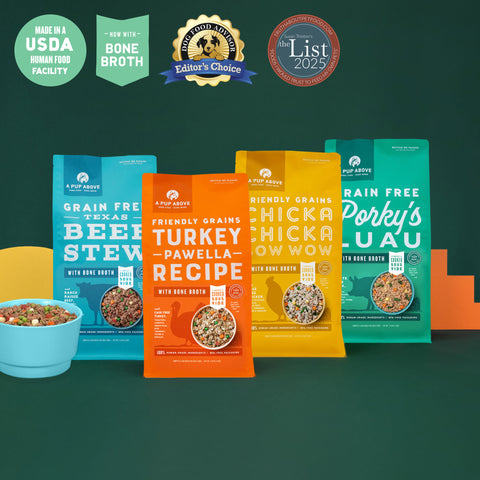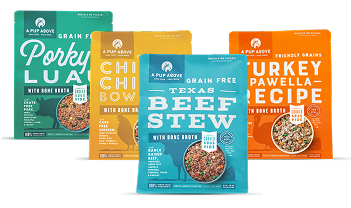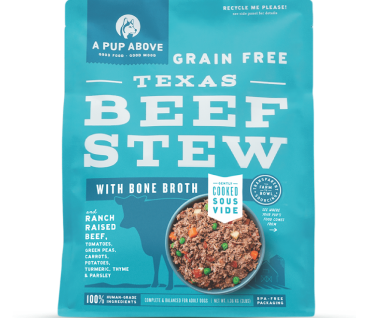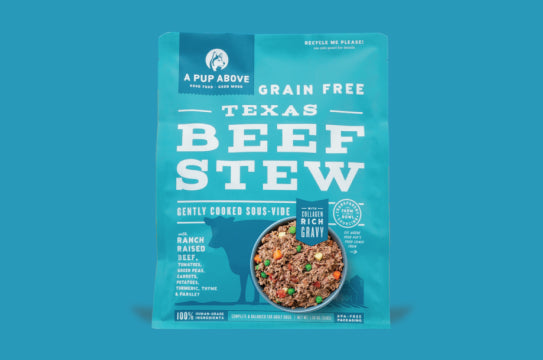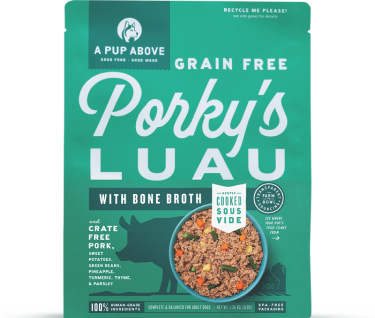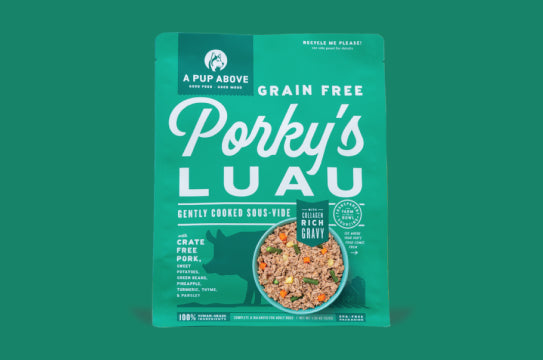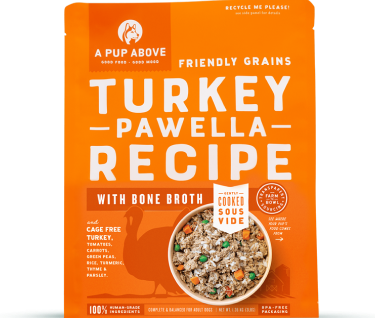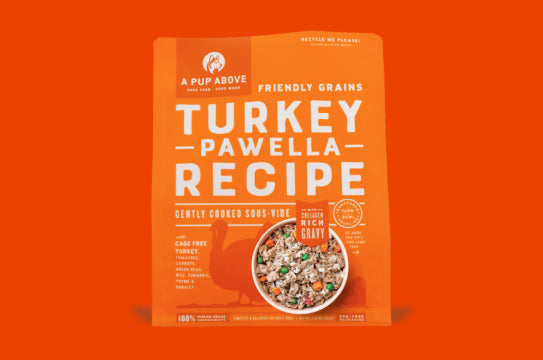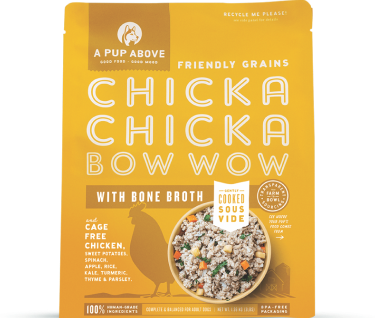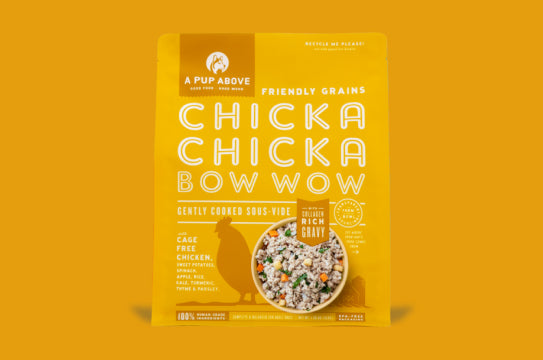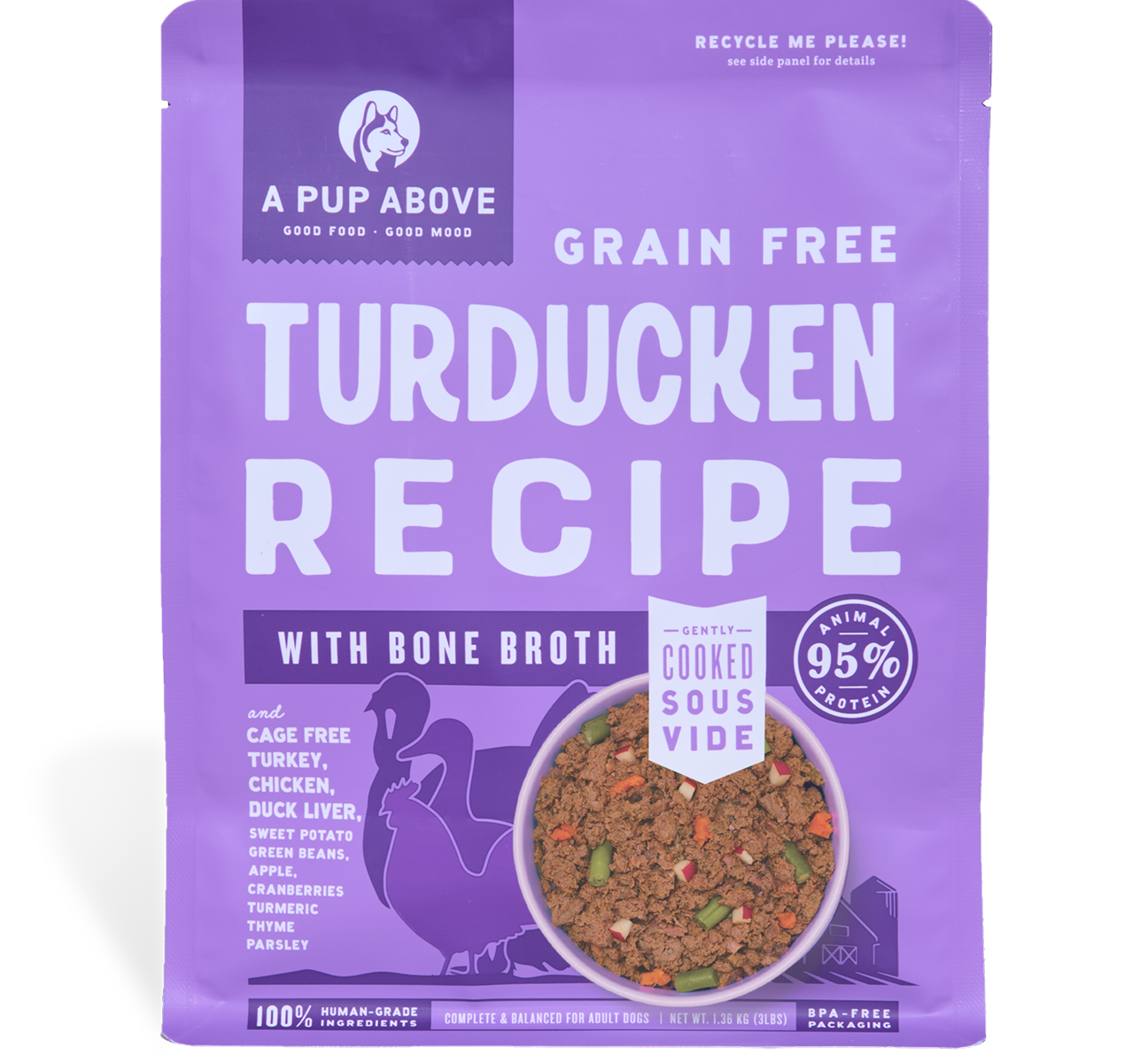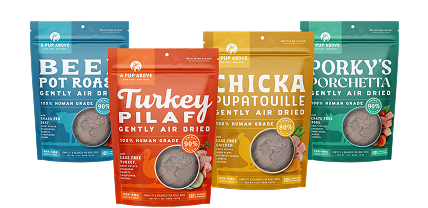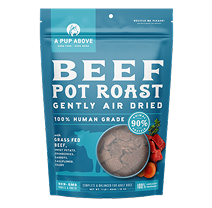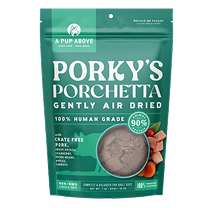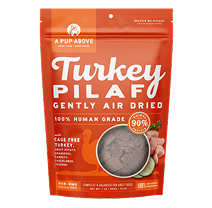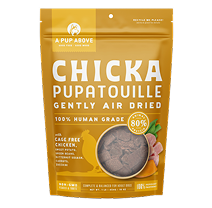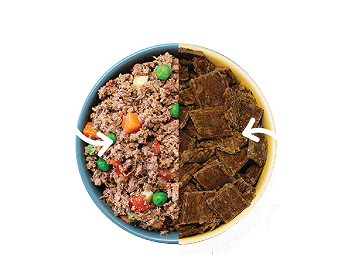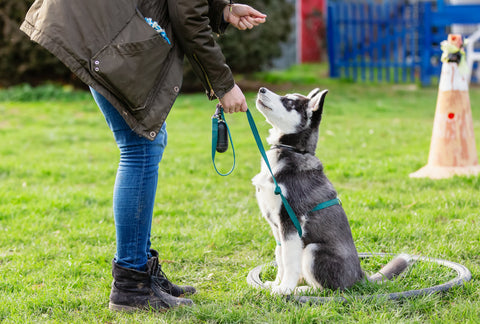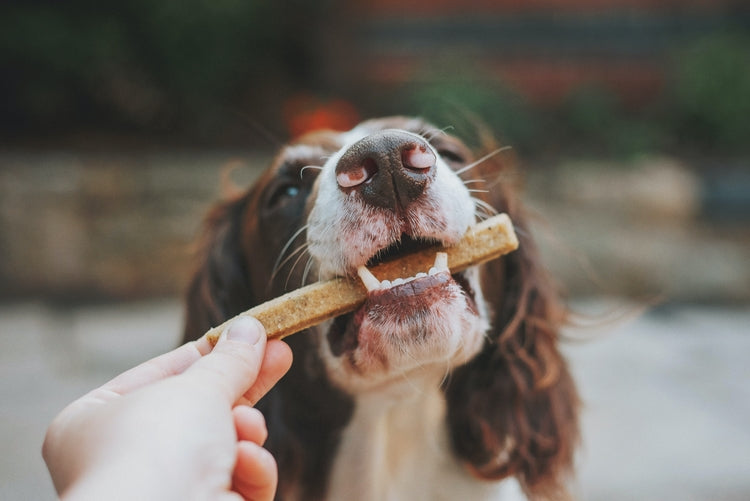
The best nutrition for dogs: 5 ideal diet strategies

We all want to do what’s best for our doggies, including a healthy diet. It sounds so simple, but when it comes down to choosing the most nutritious food for our pets, many pet owners wind up scratching their heads asking: What exactly is the ideal diet for my dog-child?
We’ve got you covered. Providing ideal dog food nutrition isn’t rocket science, but it does require understanding a few basic concepts. If you follow these tenets of proper nutrition for dogs, your furry pal can live long and prosper for years to come.
1. Choose whole foods
Just like human food labels, dog food labels should be simple to understand, and most of the words should be familiar and pronounceable. Highly processed pet food with tongue-twisting ingredients is much less healthy as well as much rougher on your fur child’s digestion. Why? Nutrient bioavailability (pronounced: /bīōˌəvāləˈbilədē/ 😉).
You probably have some understanding of digestibility, which is the amount of nutrients a person (two-footed or four-footed) absorbs from the intestine into the bloodstream. Nutrient bioavailability may be a little less familiar, but it’s really not so complex. Essentially, it is the amount of nutrients that are available for a body to use.
Highly digestible foods have greater nutrient bioavailability than do less digestible ones. That’s exactly why whole foods like chicken and beef are a healthier choice. Animal-based proteins are super bioavailable for your dog, which means their furry little bodies are great at absorbing a protein’s amino acids, especially if the food is gently cooked. Raw, freeze-dried, dehydrated, and slow-baked foods also retain bioavailability, while foods like kibble cooked at high temperatures lose quality.
Working down the bioavailability food chain, kibble goes through an extrusion process that actually affects the structure of amino acids, making them less usable or even UN-usable for some important … ahem … bodily functions. If you switch from a kibble to a more bioavailable dog food like A Pup Above, you’ll soon see what we mean. Because dogs absorb more nutrients from fresh food, they end up pooping less. (Three cheers for less poop!)
2. Go meat or go home
If your pup could use words, its take on mealtime might go something like this: “Meat good. Crunchy brown stuff is bad.” That’s because our pups are carnivores, descended from the likes of White Fang. Yes, that means although they’re curled up on your lap, they were born to eat meat!
More importantly, they are born to need protein. More specifically, an adult dog needs taurine, an amino acid which can only be gotten from meat protein. While it’s fine for your pup to have grains and veggies in their bowl, the best nutrition for dogs is a meat-forward diet that ensures they get the 22 essential aminos that are found in the highest concentrations in animal sources.
A brand like A Pup Above formulates their recipes so 90% of the protein comes from meat, which guarantees your wild-at-heart beast is getting the highest quality source of protein to keep running, playing, cuddling, and generally living the very best pup life.
3. Avoid trends
While a meat-forward diet is critical to good dog nutrition, that doesn’t mean you have to go overboard. It’s trendy to go “grain free” these days, but your pup actually needs some good ol’ carbs for energy.
Now, that doesn’t mean your pooch needs to carbo load ala a spaghetti supper the night before a bucket-list half marathon. Rather than paying too much attention to the hot new trend in pet food, keep it smart and simple by reading the nutrition content of your chosen food formula. If its primary ingredient is meat, you’ve probably chosen wisely.
4. Watch the carbs
Remember that spaghetti dinner thing? We know you wouldn’t actually feed your favorite furry friend a big bowl of pasta, but it’s easy to inadvertently serve up too many carbs in the form of dog food with too many fillers.
Why is carb overload a big deal (for adult dogs especially)? They cause lots of health problems, including being overweight, decreased metabolism, and digestion problems. Yuck.
Whole grains are fine, but many dry food recipes are crammed with 40 to 70% carbohydrates due to all of these fillers. Again, yuck. Healthy, fresh food should never include unnecessary fillers, and should contain no more than 20 to 25% carbs.
5. Just add water
We know you know it’s important to keep your dog hydrated. But did you know hydration is important to digestion? Water kickstarts the digestive system at the moment your furbaby starts to salivate.
That’s a good thing, because saliva breaks down food as it moves from the mouth through the digestive tract, and carries digestive enzymes that help ensure your pup is absorbing all the great nutrition you’ve lovingly spooned into the supper bowl.
One great way to sneak water into your dog’s diet? Serve up moist dog food with a juicy gravy. As an added bonus, gravy has collagen, which also protects your dog’s cartilage!
The cheatsheet on good dog nutrition
Ok, so now you know our 5 top tips for ideal dog nutrition. But if you don’t have time to read an entire healthy dog nutrition guide, and you just need the number 1 tip on what is the best nutrition for dogs, here you go: choose a fresh meat, gently cooked dog food.
Even the priciest kibble or cans can’t compete with the whole food nutrition you find in minimally processed fresh meat foods. That’s because the drying and extrusion routine it takes to make kibble is the ultimate in highly processed food. And while canned food is “moist,” most canned dog food manufacturers use gels and gums that can gum up your dog’s system.
Kibble and canned dog foods are less nutritious, less bioavailable, harder to digest, and harder on your dog’s body. A fresh brand like A Pup Above delights dogs — and even entices picky eaters — with tender, tasty whole food nutrition you can count on.
Top Stories

Why Do Dogs Lick Their Paws?

Why Do Dogs Whimper & Make Noises in Their Sleep?
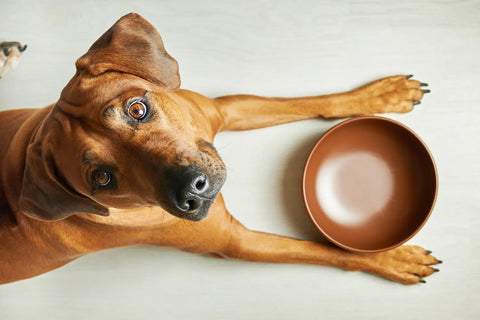
Healthy Vet-Approved Homemade Dog Food Recipes
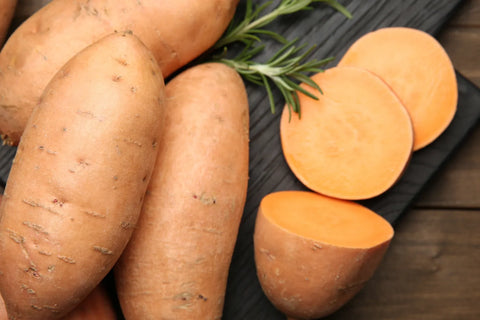
How To Cook Sweet Potatoes for Dogs
